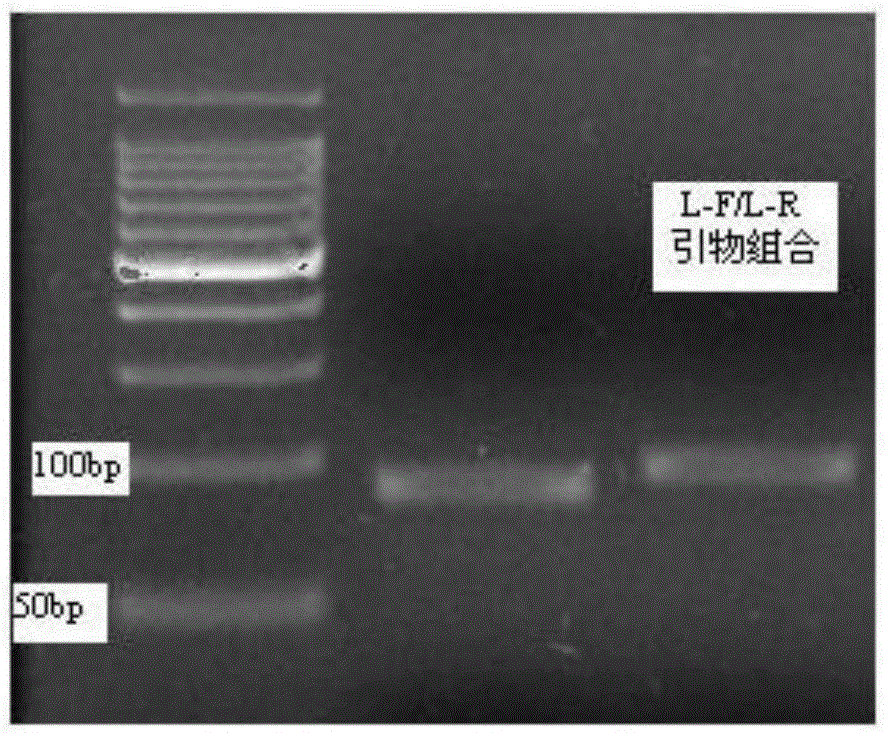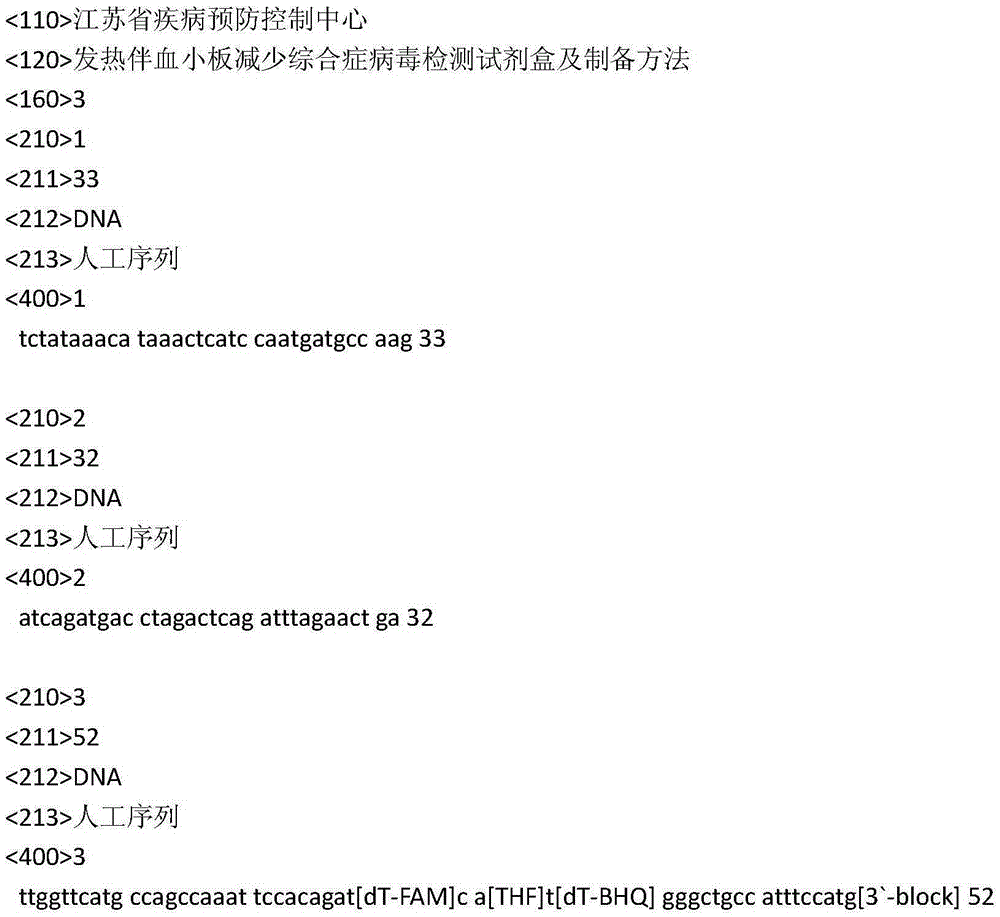Detecting kit for severe fever with thrombocytopenia syndrome viruses (SFTSV) and preparation method of detecting kit
A virus detection and kit technology, applied in the biological field, can solve the problems of expensive, prone to false positives, etc., and achieve the effect of easy operation
- Summary
- Abstract
- Description
- Claims
- Application Information
AI Technical Summary
Problems solved by technology
Method used
Image
Examples
Embodiment 1
[0017] Embodiment 1: Target gene plasmid construction
[0018] Design specific primers for the L fragment (F2705: 5'TGGAAGGCAGTTCTGGATGACGG3'; R3594: 3'GTAAAGGTGTCCGTGAACCAATC5'), amplify by PCR to obtain a 890bp nucleotide fragment, recover and purify it and connect it with the T vector to obtain a positive plasmid for the target gene. Named Puc-L.
Embodiment 2
[0019] Embodiment 2: Primer probe design and screening
[0020] Through the analysis of sequence analysis software, using the sequence between 2945-3154 of the relatively conservative L segment of SFTSV virus as a template, a total of 8 forward primers and 9 reverse primers were designed, and the length of the primers was 30-35bp; at the same time, 1 exo probe was designed (named L-exo-probe), with a length of 52bp, in which the 30th base T is labeled with the fluorescent substance FAM, the 33rd base T is replaced by tetrahydrofuran, the 35th base is labeled with the fluorescent substance BHQ, and the 3` terminal base is blocked at the same time .
[0021] Using TwistAmpBasickit (TwistDx Company, UK), the target gene cloning plasmid Puc-L was used as a template, and agarose gel electrophoresis was used as a result indicating means to screen the primers designed above. The evaluation indicators of primer quality include specificity, sensitivity, amplification efficiency and pr...
Embodiment 3
[0022] Example 3: Sensitivity of RT-RPA
[0023] Dilute the target gene cloning plasmid Puc-Ls 100 times, and then dilute it into 10 times by 10 times -2 -10 -9 A total of eight concentrations were used as templates for RT-RPA reactions: using the TwistAmpRTexos kit (TwistDx, UK). Take 29.5 μL reaction buffer and add the following components respectively: 2.1 μL each of primer L-RPAF (10 mM) and L-RPAR (10 mM), 2.6 μL RPAexo probe (10 mM), 1 μL RNase inhibitor (5 U), 7.2 μL supernatant Pure water, 5 μL sample RNA template. Vortex 8-10 times and centrifuge briefly. Another 2.5 μL of magnesium acetate (280 mM) was added. After mixing and centrifuging, put them into a Twista real-time fluorescence detector, the reaction temperature is 40°C, and the reaction time is 20 minutes.
[0024] The RT-RPA method established in this experiment can detect the lower limit is 10copies / μL, which has good sensitivity.
PUM
 Login to View More
Login to View More Abstract
Description
Claims
Application Information
 Login to View More
Login to View More - R&D
- Intellectual Property
- Life Sciences
- Materials
- Tech Scout
- Unparalleled Data Quality
- Higher Quality Content
- 60% Fewer Hallucinations
Browse by: Latest US Patents, China's latest patents, Technical Efficacy Thesaurus, Application Domain, Technology Topic, Popular Technical Reports.
© 2025 PatSnap. All rights reserved.Legal|Privacy policy|Modern Slavery Act Transparency Statement|Sitemap|About US| Contact US: help@patsnap.com


